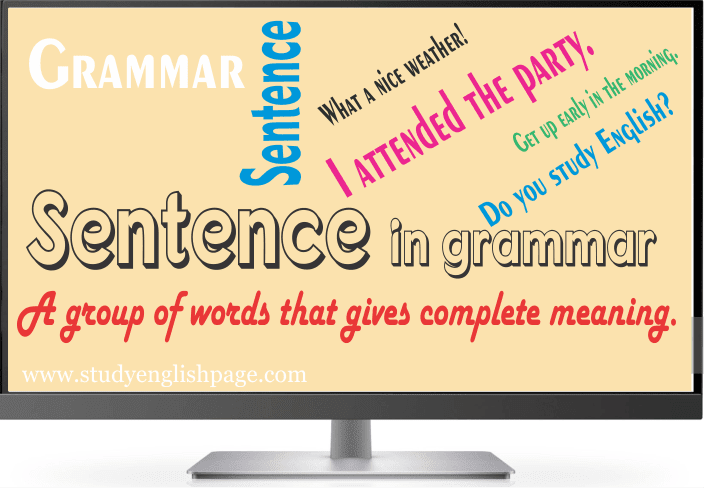Sentence in Grammar
What is a sentence?
A sentence is defined as a
group of words that gives complete sense or meaning. A sentence in grammar is a
complete thought. A sentence gives an idea by expressing a statement, command,
exclamation, or question.
The definition of the sentence
identifies that a sentence consists of more than one word containing at least a
subject and a predicate. If a subject is a single word and so is a predicate, a
sentence will be consisted of at least two words. The two words must be a
subject and a verb.
Visibility of the subject is
not necessary. Sometimes it can be hidden, but the verb must always be visible.
When you tell someone to do something, you don’t need to make it visible. In
such a case, the subject is called an understood subject.
Examples of Sentences
- I attended the party on time.
- Come on time to meet me.
- Do you have time to eat something?
- What romantic weather we have today!
- I called him on time, but he did not attend my call.
- If you want to eat something, I will pay the bill.
- When I saw her, I greeted her, but she did not give any response.
Types of Sentences
When we talk about types of
sentences, there are four types based on function and four types based on structure.
Types of Sentences Based on the Function
Declarative Sentence
A declarative sentence is
used to convey a piece of information. It ends with a full stop.
- I have to study for my test.
- I call you tomorrow after the test.
Imperative Sentence
An imperative sentence begins
with the main verb and is used to tell someone to do something. A punctuation mark
‘full stop or exclamation mark’ is used at the end.
- Respect your teacher.
- Study hard for your exam.
Interrogative Sentence
An interrogative sentence is
used to ask someone. We use a sign of interrogation or a question mark at the end
of the questions.
- Do you want to go with us for a picnic?
- What does she tell you about me?
Exclamatory Sentence
An exclamatory sentence is
used to show emotions, feelings, etc. The exclamation mark is also the identity of an exclamatory sentence as it ends with an exclamation mark.
- What a nice shirt that is!
- It is beautiful!
Types of Sentences Based on the Structure
Simple Sentence
A simple sentence consists
of just one clause that is independent.
- You have to work hard to get the first position in the class.
- Study English Page is the best source to learn English.
Compound Sentence
A compound sentence has at
least two independent clauses with no independent clauses.
- I can trust you, but my parents can’t trust you.
- My brother studied math last night, and my sister studied English.
Complex Sentence
A complex sentence has at
least two clauses of which one must be an independent clause and at least one
dependent clause.
- When I get up early in the morning, I walk for 30 minutes.
- You will be physically fit if you walk for 30 minutes every day.
Compound-Complex Sentence
It is a combination of
compound and complex sentences. It has at least two independent clauses and at
least one independent clause.
- I wanted to invite him, but he responded negatively when I met him.
- If you commend me, I will get a job and I will also be thankful to you.
Key Points Related to Sentences
Sentence (not a single word)
As we have studied that a sentence is a group of words, so
keep in your mind that one word can’t be a sentence. In an imperative sentence,
the subject is understood or invisible. You may see one word in an imperative sentence.
You don’t need to be confused because the subject is invisible. If you consider
the invisible subject, it will become a group.
Using comma
It is also important to use a comma properly. When there is conjunction and preceded by a comma, it clarifies that it joins two independent
clauses. A comma is also used after a dependent clause that comes at the front.
Using question mark
Questions are ended with question marks, but there are declarative
sentences that convey indirect questions. All declarative sentences end with
full stops even if they include indirect questions.
Related Links:

